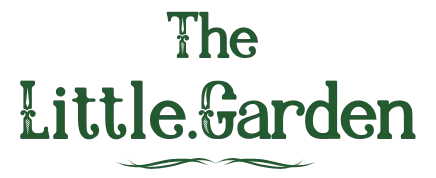As you venture into the world of Annabelle Hydrangeas, it’s essential to familiarize yourself with potential hiccups — the Annabelle Hydrangea Problems that every gardener might encounter.

The Annabelle Hydrangea plant stands as an unequivocal marvel, adorning any garden with its exquisite blossoms.
You're reading: 10 Annabelle Hydrangea Problems
Distinguished by its ten-inch, snowflake-like petals, this botanical specimen emerges as an indispensable acquisition for avid flower enthusiasts.
In the course of my tenure as an owner of several Annabelle Hydrangea, I have picked up valuable lessons in caring for this plant, which I’d like to share with you here.
Annabelle Hydrangeas: A Tip to Blooming Success
Read more : 5 Reasons Why Rhododendron Not Growing
These magnificent flowers produce scented blooms that enchant from June through early Fall.
Their blossoms stand tall on large stalks, sometimes reaching up to six feet in height.
Annabelle Hydrangeas thrive in slightly cooler temperatures, so it’s best to avoid exposing them to intense afternoon sun if possible.

Common Annabelle Hydrangea Problems
While ‘Annabelle’ hydrangeas (Hydrangea arborescens ‘Annabelle’) are generally hardy and relatively low-maintenance, they can face a few common problems.
1. Powdery Mildew
- Symptoms: White, powdery spots on leaves, especially in humid conditions.
- Prevention and Treatment: Provide good air circulation, avoid overhead watering, and apply fungicides if necessary.
2. Leaf Spot Diseases
- Symptoms: Brown or black spots on leaves, sometimes with a yellow halo.
- Prevention and Treatment: Remove and dispose of infected leaves, practice good garden hygiene, and consider fungicide applications if the problem persists.
3. Root Rot
- Symptoms: Yellowing leaves, wilting, and general decline in plant health.
- Prevention and Treatment: Ensure well-draining soil, avoid overwatering, and consider fungicide treatments for severe cases.

4. Bud Blight
- Symptoms: Failure of buds to open, leading to a lack of flowers.
- Prevention and Treatment: Proper pruning to encourage air circulation, avoiding overhead watering, and providing adequate sunlight can help prevent bud blight.
5. Insect Pests
- Aphids, Spider Mites, and Scale Insects: These pests can feed on the leaves, causing discoloration and distortion.
- Prevention and Treatment: Regularly inspect the plant for pests, use insecticidal soap or neem oil, and encourage natural predators like ladybugs.
6. Deer Damage
- Symptoms: Browsing or nibbling on leaves, stems, or flowers.
- Prevention and Treatment: Use deer repellents, erect fencing, or choose plants that are less attractive to deer.
7. Winter Damage
- Symptoms: Browning or dieback of stems due to winter frost or freeze.
- Prevention and Treatment: Mulch around the base of the plant in late fall to protect the roots, and consider providing some winter protection in colder climates.

8. Alkaline Soil and Flower Color Change
- Symptoms: ‘Annabelle’ hydrangeas may produce pink flowers in alkaline soils instead of their usual white.
- Prevention and Treatment: Adjusting soil pH towards the acidic side can help maintain the desired white flower color.
9. Overly Leggy Growth
- Symptoms: Long, weak stems that may flop over, especially when the plant is top-heavy with blooms.
- Prevention and Treatment: Prune selectively in late winter or early spring to encourage a more compact growth habit. Provide support for large blooms.
10. Improper Pruning
- Symptoms: Cutting back too severely or at the wrong time can affect flowering.
- Prevention and Treatment: Follow proper pruning guidelines, which usually involve cutting back in late winter or early spring before new growth begins. Rejuvenation pruning (cutting back to the ground) can be done periodically.

Tips to Keep Your Annabelle Hydrangeas Upright and Beautiful
Read more : Begonia Rex Soil & A Short Care Guide
Here are a few tips I’ve picked up that will help ensure the survival and outstanding appearance of your Annabelle Hydrangeas:
- Planting next to a fence: Staking the heavy blooms against a fence will provide much-needed support.
- Planting multiple shrubs: Plant at least three Annabelle shrubs, with three to four feet of space between them. This arrangement allows the plants to support one another.
- Pruning with care: When rain causes the hydrangeas to flatten, prune Annabelles to a height of 18-24 inches, rather than cutting them down to the ground every year. This practice helps the stems thicken gradually, providing better support for the branches and blooms. Additionally, smaller heads are less likely to droop while still being plentiful.
- Install wire support: Place a short wire fence or wire support around each plant before they bloom. By doing so, the blooms will be held up off the ground, even when the plants are still young and developing branches in the spring.

Final Thoughts
These remarkable plants deserve the best care and support, ensuring years of enjoyment.
Do you have any tips for growing Annabelle Hydrangeas? Share them in the comments below.
If you’re not already doing so, you can also follow along on Instagram for daily updates and happenings at The Little Garden.
Source: https://thelittle.garden
Category: Gardening
